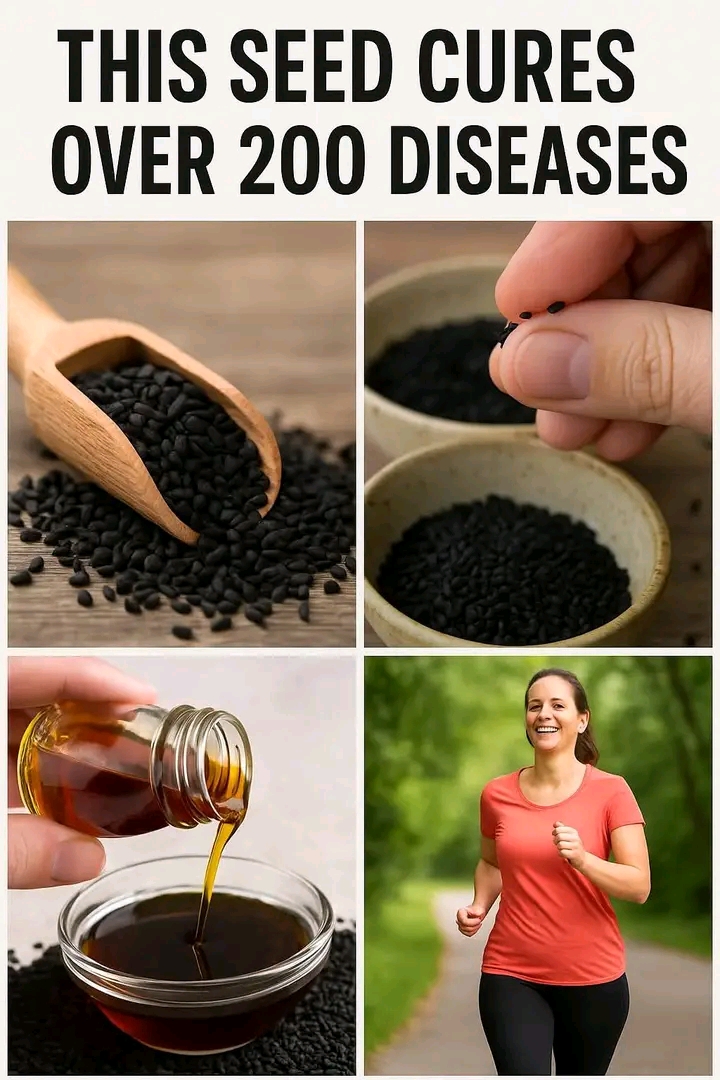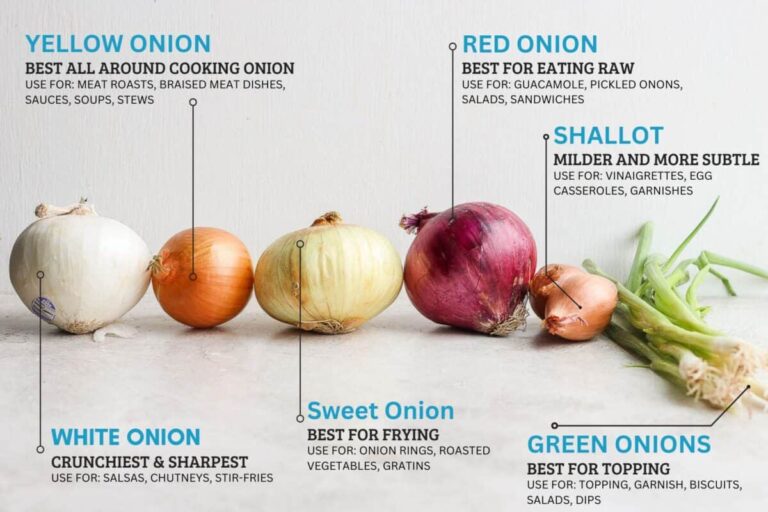The Ancient Elixir Revisited: Apple Cider Vinegar Dosage and Use – A Practical Guide to Reaping the Health Rewards
In the vast tapestry of natural remedies, few threads are as enduring, as vibrant, or as consistently rediscovered as that of Apple Cider Vinegar (ACV). From the ancient Babylonian scrolls to the bustling modern kitchen, this humble fermented apple juice has traversed millennia, whispered about in folk wisdom, championed by health enthusiasts, and, increasingly, scrutinized by scientific inquiry. Yet, for all its storied past and burgeoning popularity, ACV remains shrouded in a haze of anecdotal claims and often-conflicting advice.
Our journey today is not merely to list its purported benefits, but to embark on an expedition into the heart of ACV: its very essence, its scientific underpinnings, and, most critically, a practical, knowledgeable guide to its dosage and responsible use. This is a story for the discerning mind, for those who seek not just the "what" but the "why" and the "how," allowing you to navigate the world of ACV with confidence, wisdom, and a profound appreciation for its potential.
The Genesis of an Elixir: Understanding What You Hold
Before we delve into the practicalities of dosage and application, it’s paramount to truly understand what Apple Cider Vinegar is. It’s not just sour apple juice; it’s a living testament to fermentation, a process that transforms simple sugars into a complex symphony of beneficial compounds.
The Transformation:
The journey begins with fresh apples, crushed and pressed to extract their juice. This juice is then subjected to a two-step fermentation process:
- Alcoholic Fermentation: Yeast is introduced, consuming the sugars in the apple juice and converting them into alcohol. This is essentially how cider is made.
- Acetic Acid Fermentation: The crucial second step involves the introduction of Acetobacter bacteria. These remarkable microorganisms thrive on the alcohol, oxidizing it into acetic acid – the primary active compound responsible for ACV’s distinctive pungent aroma and many of its health benefits.
The "Mother": The Heart of the Elixir
Perhaps the most iconic feature of high-quality ACV is the "mother." This cloudy, cobweb-like substance floating at the bottom of the bottle is not a flaw; it’s a treasure. The mother is a complex matrix of beneficial bacteria, enzymes, and proteins, formed during the fermentation process. It signifies that the ACV is raw, unfiltered, and alive, teeming with the very compounds that contribute to its wellness prowess. Think of it as the soul of the vinegar, a probiotic powerhouse.
Key Components and Their Significance:
- Acetic Acid: Comprising 5-6% of ACV, this is the superstar. It’s a short-chain fatty acid believed to be responsible for many of ACV’s metabolic effects, including blood sugar regulation and potential weight management benefits.
- Malic Acid: Another organic acid present in apples, contributing to ACV’s tartness and potentially playing a role in energy production.
- Polyphenols: These are powerful antioxidants, naturally present in apples, that survive the fermentation process. They help combat oxidative stress in the body.
- Enzymes: The "mother" is rich in various enzymes that aid in digestion and nutrient absorption.
- Trace Minerals: While not a significant source, ACV contains small amounts of potassium, magnesium, calcium, and phosphorus.
- Probiotic Bacteria: The living cultures within the mother can contribute to a healthy gut microbiome.
For a knowledgeable audience, it’s crucial to distinguish between raw, unfiltered ACV with the mother and pasteurized, filtered varieties. The latter, while still containing acetic acid, lacks the probiotic benefits, enzymes, and some of the nuanced complexity found in its unadulterated counterpart. Always opt for the cloudy, sediment-rich bottle; it’s a sign of vitality.
The Science-Backed Symphony: How ACV Works Its Magic
The true story of ACV lies not just in its composition, but in the intricate ways these compounds interact with our physiology. While anecdotal evidence abounds, a growing body of scientific research is beginning to unravel the mechanisms behind its purported benefits.
1. Blood Sugar Regulation: The Most Robust Evidence
This is where ACV truly shines in the scientific literature. Numerous studies have demonstrated ACV’s ability to improve insulin sensitivity and lower post-meal blood glucose levels.
- Mechanism: Acetic acid is believed to inhibit the activity of certain enzymes (like disaccharidases) in the gut, which are responsible for breaking down complex carbohydrates into simple sugars. This slows down the absorption of glucose into the bloodstream, leading to a more gradual rise in blood sugar. Furthermore, acetic acid may enhance glucose uptake by cells and improve the body’s response to insulin.
- Implication: This makes ACV a particularly interesting adjunct for individuals managing type 2 diabetes or those at risk of developing insulin resistance. It’s a gentle nudge towards metabolic balance.
2. Digestive Harmony: A Gut Feeling
ACV has long been a folk remedy for digestive woes, and modern understanding offers some compelling explanations.
- Mechanism: While counterintuitive for some, ACV, being acidic, can actually help raise stomach acid levels (hydrochloric acid, HCl) in individuals who suffer from hypochlorhydria (low stomach acid). Sufficient HCl is crucial for breaking down food, absorbing nutrients (especially minerals like calcium and magnesium), and acting as a barrier against pathogens. ACV can also stimulate the production of digestive enzymes. The probiotics in the mother further contribute to a balanced gut microbiome.
- Implication: Improved digestion, reduced bloating, and better nutrient absorption.
3. Weight Management: A Gentle Nudge, Not a Miracle Cure
The claim that ACV causes significant weight loss is often overstated, but research suggests it can play a supportive role.
- Mechanism: Acetic acid may increase satiety, helping individuals feel fuller for longer and potentially leading to reduced calorie intake. Studies have shown that ACV consumption can lead to a reduction in abdominal fat and body weight, possibly by activating AMPK (AMP-activated protein kinase), an enzyme that plays a key role in cellular energy homeostasis and fat metabolism.
- Implication: When combined with a healthy diet and exercise, ACV can be a useful tool for appetite control and metabolic support.
4. Cardiovascular Health: A Heartfelt Consideration
Emerging research suggests ACV may contribute to heart health, primarily through its effects on cholesterol and blood pressure.
- Mechanism: Some animal studies indicate that ACV can lower triglyceride and LDL (bad) cholesterol levels while increasing HDL (good) cholesterol. The exact mechanism is still being explored but may involve its antioxidant properties and impact on lipid metabolism. Additionally, ACV may help regulate blood pressure by influencing the renin-angiotensin system, which controls blood vessel constriction.
- Implication: While not a primary treatment, ACV could be a complementary factor in a holistic approach to cardiovascular wellness.
5. Antimicrobial and Antifungal Properties: A Natural Defender
ACV’s acidity makes it a formidable opponent against various pathogens.
- Mechanism: Acetic acid creates an environment inhospitable to many bacteria, yeasts, and fungi. This makes it effective for topical applications against skin infections, fungal nails, and even as a natural disinfectant. Internally, it can help balance the gut microbiome by inhibiting the growth of harmful bacteria.
- Implication: A versatile tool for both internal and external hygiene and protection.
6. Antioxidant Power: Fighting Free Radicals
The polyphenols inherited from apples, along with other compounds in ACV, contribute to its antioxidant capacity.
- Mechanism: Antioxidants neutralize free radicals, unstable molecules that can damage cells and contribute to chronic diseases and aging.
- Implication: ACV supports overall cellular health and resilience.
It’s crucial to approach these benefits with a knowledgeable perspective: ACV is a powerful adjunct to a healthy lifestyle, not a standalone cure. Its efficacy is best realized when integrated into a balanced diet, regular exercise, and mindful living.
The Practical Guide: Dosage and Application – The Art of Mindful Integration
Now that we understand the "what" and the "why," let’s turn to the "how." Integrating ACV into your daily routine requires a thoughtful, cautious, and consistent approach. The goal is to maximize benefits while minimizing potential risks.
The Golden Rule: Start Low, Go Slow, Always Dilute.
This principle cannot be overstated. ACV is potent, and direct, undiluted consumption can cause significant harm.
Internal Use: The Daily Ritual
The most common way to consume ACV is orally, mixed with water or other liquids.
- Standard Starting Dose: Begin with 1 teaspoon (5ml) of raw, unfiltered ACV mixed in 8-10 ounces (240-300ml) of filtered water.
- Rationale: This conservative starting point allows your body to adjust to the acidity and ensures you tolerate it well.
- Gradual Increase (if tolerated): Over several days or a week, if you experience no adverse effects, you can gradually increase to:
- 1 tablespoon (15ml) mixed in 8-10 ounces of water, once or twice daily.
- Maximum Recommended Dose: Generally, most individuals find benefit with 1-2 tablespoons per day. Exceeding 2 tablespoons daily is rarely necessary and significantly increases the risk of side effects.
- Timing is Key:
- Before Meals: Many choose to take ACV 15-30 minutes before a meal, especially one rich in carbohydrates. This can help moderate post-meal blood sugar spikes and aid digestion.
- Morning: Some prefer it first thing in the morning on an empty stomach to kickstart digestion and metabolism.
- Before Bed: For those specifically targeting nighttime blood sugar levels, a dose before bed may be beneficial, but monitor for potential acid reflux.
- Preparation & Taste Management:
- Dilution is Mandatory: Never drink ACV neat. Its acidity (pH 2.5-3.0) can erode tooth enamel, irritate the esophagus, and damage mucous membranes.
- Water is Your Best Friend: Plain water is the simplest and most effective diluent.
- Beyond Water:
- Herbal Tea: Mix ACV into a warm cup of herbal tea (ginger, peppermint, chamomile) for added flavor and digestive support.
- Smoothies: Mask the taste by adding a tablespoon to your morning fruit or green smoothie.
- Lemon & Honey: A squeeze of fresh lemon juice and a teaspoon of raw honey can significantly improve palatability while adding their own health benefits.
- Apple Juice (Diluted): A small amount of apple juice can help, but be mindful of added sugar.
- Post-Consumption Care:
- Rinse Your Mouth: After drinking ACV, rinse your mouth thoroughly with plain water to minimize contact with tooth enamel.
- Avoid Brushing Immediately: The acid temporarily softens enamel, so brushing right after could cause more damage. Wait at least 30 minutes.
- Use a Straw: Drinking through a straw can further reduce contact with teeth.
Topical Use: External Benefits
ACV’s antimicrobial and pH-balancing properties make it useful for external applications, but again, dilution is paramount.
- Skin Toner (Acne, pH Balance):
- Ratio: Mix 1 part ACV with 3-4 parts filtered water (e.g., 1 tbsp ACV to 3-4 tbsp water). For sensitive skin, start with a 1:5 or 1:6 ratio.
- Application: Apply with a cotton pad to clean skin. Leave on for 5-10 minutes, then rinse. Use once daily, preferably at night.
- Patch Test: Always test on a small, inconspicuous area of skin first to check for irritation.
- Hair Rinse (Scalp Health, Shine):
- Ratio: Mix 1 part ACV with 4-5 parts water (e.g., 2 tbsp ACV to 1 cup water).
- Application: After shampooing, pour the diluted mixture over your hair, focusing on the scalp. Massage gently. Let it sit for a few minutes, then rinse thoroughly. Use 1-2 times per week.
- Benefits: Helps balance scalp pH, reduce dandruff, remove product buildup, and enhance shine.
- Foot Soak (Fungal Issues, Odor):
- Ratio: Add 1 cup of ACV to a basin of warm water.
- Application: Soak feet for 15-20 minutes.
- Benefits: Antimicrobial properties can help combat foot odor and fungal infections like athlete’s foot.
- Wound Care (Minor Cuts, Scrapes):
- Ratio: Dilute ACV significantly (e.g., 1 part ACV to 8-10 parts water).
- Application: Use a clean cloth or cotton ball to gently dab the diluted solution onto minor cuts or scrapes to help cleanse and prevent infection.
- Caution: Do not use on deep wounds, open sores, or burns. Always consult a healthcare professional for serious injuries.
Culinary Use: Flavor and Function
Beyond dedicated dosage, ACV shines in the kitchen, lending its distinctive tang and health benefits to various dishes.
- Salad Dressings: A classic application. Combine ACV with olive oil, herbs, salt, and pepper for a vibrant vinaigrette.
- Marinades: Its acidity helps tenderize meat and infuse flavor.
- Pickling: A fundamental ingredient in quick pickles, preserving vegetables while adding a zesty kick.
- Baking: Can be used in recipes (e.g., vegan baking) as a leavening agent when combined with baking soda.
- Soups and Stews: A splash at the end can brighten flavors and add a subtle complexity.
Navigating the Nuances: Safety, Side Effects, and Considerations
Even with its natural origins, ACV is potent and demands respect. A knowledgeable approach includes understanding its potential pitfalls and knowing when to exercise caution or seek professional advice.
1. The Non-Negotiable Dilution:
- Tooth Enamel Erosion: The most significant risk. Undiluted ACV (pH 2.5-3.0) is highly acidic and can dissolve tooth enamel over time, leading to sensitivity, cavities, and permanent damage. Always dilute, rinse your mouth, and consider a straw.
- Esophageal and Throat Irritation: Concentrated ACV can cause burning sensations or irritation in the throat and esophagus, particularly in sensitive individuals or those with pre-existing conditions like GERD.
2. Potential Side Effects:
- Digestive Upset: Nausea, stomach pain, or diarrhea can occur, especially when starting with too high a dose or without adequate dilution.
- Potassium Depletion: Long-term, high-dose ACV consumption has been linked to hypokalemia (low potassium levels). Acetic acid can interfere with the body’s electrolyte balance. Symptoms include muscle weakness, cramps, and irregular heart rhythms.
- Bone Density: Some very limited case studies suggest a potential link between excessive ACV use and bone density reduction, possibly due to mineral chelation or potassium depletion. This is a rare occurrence but worth noting for chronic, high-dose users.
3. Drug Interactions: A Serious Consideration
ACV can interact with certain medications, altering their efficacy or increasing side effects. Always consult your doctor before incorporating ACV if you are on any medication, especially:
- Diuretics (Water Pills): Both ACV and diuretics can lower potassium levels, increasing the risk of hypokalemia.
- Laxatives: Can exacerbate the risk of low potassium.
- Insulin and Diabetes Medications: ACV lowers blood sugar. Combining it with diabetes medications could lead to dangerously low blood sugar (hypoglycemia). Close monitoring of blood glucose levels is essential.
- Digoxin (Lanoxin): A heart medication whose effects can be altered by low potassium levels.
- Blood Thinners: While less established, some natural compounds can interfere with blood clotting. Discuss with your doctor if you are on anticoagulants.
4. Contraindications and Special Populations:
- Gastroesophageal Reflux Disease (GERD), Ulcers, or Gastritis: While some find ACV helpful for mild acid reflux (if due to low stomach acid), for others, particularly those with existing ulcers or inflamed esophageal lining, ACV can worsen symptoms and cause further irritation. Exercise extreme caution or avoid entirely.
- Kidney Disease: Individuals with compromised kidney function may have difficulty regulating electrolytes, making ACV’s potential to affect potassium levels a concern.
- Pregnancy and Breastfeeding: There is insufficient research on the safety of ACV during pregnancy and lactation. It’s best to err on the side of caution and avoid therapeutic doses, sticking to culinary amounts.
- Children: ACV is generally not recommended for therapeutic use in young children due to its potency and potential for side effects.
- Osteoporosis: Given the potential (albeit rare) link to bone density, individuals with osteoporosis should discuss ACV use with their physician.
5. Quality Matters: The "Mother" of All Decisions
As previously emphasized, not all ACV is created equal. To reap the full spectrum of benefits, always choose:
- Raw and Unfiltered: This ensures the presence of the "mother."
- Organic: Minimizes exposure to pesticides and herbicides from the apples.
- Glass Bottle: Reduces the risk of plastic leaching into the acidic vinegar.
6. Storage:
Store ACV in a cool, dark place, away from direct sunlight. It does not require refrigeration and has an almost indefinite shelf life due to its acidity, though the mother may continue to grow and evolve.
Beyond the Bottle: Holistic Integration and Lifestyle
The story of Apple Cider Vinegar is not a solitary one; it is intricately woven into the larger narrative of holistic wellness. While ACV offers undeniable potential, it is crucial to view it as a supportive character, not the sole protagonist, in your health journey.
- ACV as a Catalyst, Not a Cure-All: No single food or supplement can magically solve all health problems. ACV works best when integrated into a foundation of healthy living.
- The Power of Diet: Pair ACV with a whole-foods-rich diet, emphasizing fruits, vegetables, lean proteins, and healthy fats. Its blood sugar regulating effects are most pronounced when combined with a low-glycemic eating pattern.
- The Movement Principle: Regular physical activity enhances insulin sensitivity, improves cardiovascular health, and supports weight management – all areas where ACV provides complementary benefits.
- Rest and Recharge: Adequate sleep and stress management are foundational to hormonal balance, digestive health, and overall well-being. ACV can support these systems, but cannot replace them.
- Mindful Consumption: Pay attention to how your body responds to ACV. Observe changes in digestion, energy levels, and any potential side effects. This personalized approach is the hallmark of truly knowledgeable self-care.
- Professional Guidance: For any underlying health conditions, especially diabetes, kidney disease, or cardiovascular issues, or if you are on medication, always consult with your healthcare provider before starting ACV as a therapeutic supplement. They can offer personalized advice, monitor your progress, and ensure it aligns with your overall treatment plan.
The Concluding Chapter: A Responsible Partnership with Nature
Our journey through the world of Apple Cider Vinegar has revealed a fascinating blend of ancient wisdom and emerging science. We’ve explored its humble origins, dissected its powerful components, understood the mechanisms behind its benefits, and, critically, outlined a practical, responsible guide to its dosage and use.
ACV is more than just a pantry staple; it’s a testament to the transformative power of nature, offering a diverse array of potential health benefits, from regulating blood sugar and supporting digestion to enhancing skin health. However, its potency demands respect, diligence, and an informed approach.
By embracing the "start low, go slow, always dilute" mantra, understanding its interactions, and viewing it as a valued partner in a broader commitment to wellness, you can unlock the full potential of this ancient elixir. Let your relationship with Apple Cider Vinegar be one of mindful exploration, guided by knowledge, tempered by caution, and always in conversation with your body’s unique wisdom. This is how you truly reap the rewards, transforming a simple fermented apple juice into a profound ally on your path to vibrant health.






